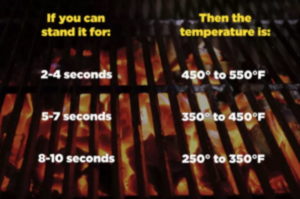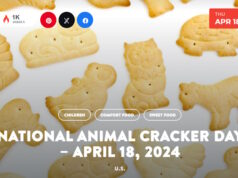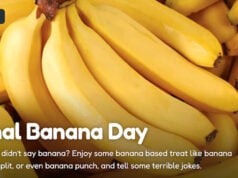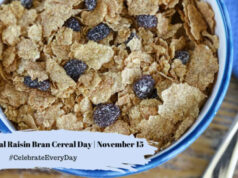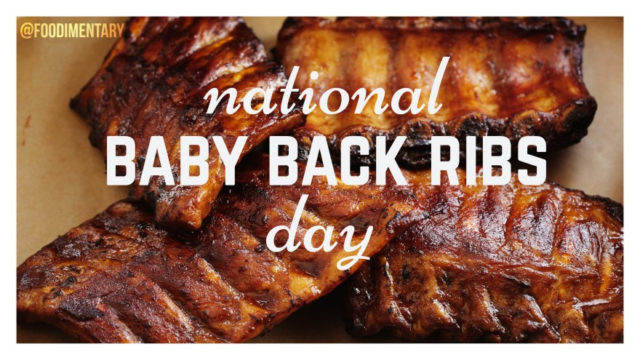
Thursday, September 3, is National Baby Back Ribs Day!
Summer is a little more than halfway over, but there’s still plenty of grilling time left until Labor Day (and beyond). So there’s still time to finally figure out the difference between baby back and spare ribs too.
Pork ribs go by many names, depending on the region, but two of the most common in American BBQ are baby back ribs and spare ribs.
Baby-back ribs got their name because they’re shorter than spare ribs – Not because they come from baby animals.
- No one is really sure where the term barbecue originated. The conventional wisdom is that the Spanish, upon landing in the Caribbean, used the word barbacoa to refer to the natives’ method of slow-cooking meat over a wooden platform.
- Others think the French were responsible, offering the explanation that when the Caribbean pirates arrived on our Southern shores, they cooked animals on a spit-like device that ran from “whiskers to tail” or “de barbe a` queue.”
- Barbecue varies by region, with the four main styles named after their place of origin: Memphis, Tenn.; North Carolina; Kansas City; and Texas.
- In order to be called “baby back ribs,” the rack needs to be smaller than a pound and a half.
- Pigs have 14 rib bones! They are divided into four popular cuts: spare ribs, St. Louis, rib tips, and baby backs.
- No one knows who invented the barbecue.
- The Oxford English Dictionary cites the first recorded use of the word barbecue in the English language in 1697 by the British buccaneer William Dampier.
- While the standard modern English spelling of the word is barbecue, local variations like barbeque and truncations such as bar-b-q or bbq may also be found.
- Ellsworth B. A. Zwoyer of Pennsylvania patented a design for charcoal briquettes in 1897. After World War I, the Zwoyer Fuel Company built charcoal briquette manufacturing plants in the United States with plants in Buffalo, NY and Fall River, MA.
- In the southeastern United States, the word barbecue is used predominantly as a noun referring to roast pork, while in the southwestern states; cuts of beef are often cooked.
- Barbecues have been a White House tradition since Thomas Jefferson. Lyndon B. Johnson, the 36th president of the United States, hosted the first barbecue at the White House that featured Texas-style barbecued ribs. Jimmy Carter hosted a “pig-pickin’” for 500 people.
- The most popular holidays for barbecuing are, in order, July 4th (71 percent), Memorial Day (57 percent), and Labor Day (55 percent).
- The most popular foods for cooking on the grill are, in order: burgers (85 percent), steak (80 percent), hot dogs (79 percent) and chicken (73 percent).
- The most popular barbecue utensils are long-handled tongs (77 percent), followed by forks (64 percent), long-handled spatulas (59 percent), and then grill cleaning brushes (63 percent).
- Competition barbecuing is one of the hottest hobbies in the country with hundreds of cook-offs held throughout all 50 states. The biggest and most famous are Memphis in May and The American Royal in Kansas City. Both cities stake their claim to being the barbecue capital of the US.
- 60% of grillers say they barbecue year-round.
- In 2009, researchers found mammoth ribs in a 4-ft. cooking pit that appeared to date back to 29,000 B.C. The area was also covered with conch shells, which made archaeologists wonder whether the barbecue had been a “surf-and-turf” meal.
-
Image: AWPNow.com There’s an actual science to measuring barbecue heat with your hand – Next time you float your hand over your grill, do it with purpose. Hold your palm five inches above the grill and count the number of seconds before you feel the urge to yank it away. (See Chart)
Sources:



